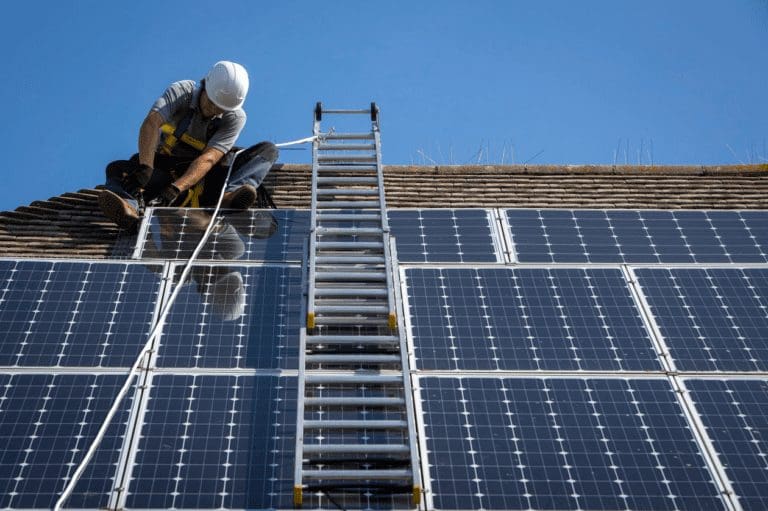
Announced as part of today’s ‘Energy Security Day’ package, the measure was among the key policy recommendations set out in Chris Skidmore MP’s Net Zero Review. Solar Energy UK had also made a separate call for the establishment of a government-industry group with similar objectives.
“Solar Energy UK strongly welcomes the taskforce, which is a clear indication from the Government that it wants the UK to take full advantage of solar energy’s vast economic potential,” said Chris Hewett, chief executive of Solar Energy UK.
“We look forward to working closely with ministers to lay the path towards a five-fold increase in solar capacity in the UK by 2035 and addressing the key barriers to unlock the full potential of all scales of solar and energy storage.”
“In particular, the new body needs to address the need for major improvements in network capacity and management, support for skills and training so the workforce can grow in line with demand for the technologies and ensure finance and markets are available for solar to be accessible to all businesses and individuals,” he added.
The body’s specific goals and membership will be established in due course.
Large scale solar deployment
The central ‘Powering Up Britain’ paper says that solar energy has “huge potential” to help decarbonise the power sector. “We need to maximise deployment of both ground and rooftop solar to achieve our overall target. Ground-mount solar is one of the cheapest forms of electricity generation and is readily deployable at scale. Government seeks large scale solar deployment across the UK,” it states, seeking “widespread deployment” of rooftop solar power for commercial, industrial and domestic properties, too.
The accompanying Energy Security Plan published today commits to the development of a ‘solar roadmap’, another aspect of Mr Skidmore’s report. It will set out the pathway towards reaching 70 gigawatts of solar generation capacity by 2035, mandated in last year’s Energy Security Strategy. It is scheduled to be published next year.
Today’s papers also reference Solar Energy UK’s work on the ‘bootcamps’ being run under the Solar Skills London project, as part of a broader initiative to address workforce skills needs in key low carbon sectors. This will feed into the Government’s forthcoming Net Zero Skills and Workforce Action Plan.
Welcome announcements
Solar Energy UK also welcomes further announcements made today.
- Investing in reinforcing electricity networks is priority number one for the solar industry. Many larger projects, whether solar farms or mounted on warehouse rooftops, are unable to connect to the grid and waiting times for upgrades can stretch long into the 2030s. This is a drag on the economy, cutting bills and on reaching net zero. The promise for the Electricity Networks Commissioner Nick Winser to deliver recommendations to halve delivery times for new infrastructure, due in June, is thus especially welcome.
- The opening of the fifth allocation round of Contracts for Difference, backed with a £205m budget, will provide investors with further confidence in the UK solar market.
- Investment in home insulation and heat pumps, which is vital for the decarbonisation of heat in buildings. The Boiler Upgrade Scheme, which offers a £5,000 discount on the purchase of a heat pump, will be extended to 2028.
- Investment of up to £200m from the UK Infrastructure Bank into short- and long-term electricity storage, which should attract further private capital into the sector.
Solar power accounted for 4.3% of the UK’s electricity generation in 2022. New installations have been subsidy-free since 2019, reflecting a huge drop in the cost of panels over the past decade. Due largely to the energy price crisis, rooftop installations are running at around three times the rate seen in 2021.


